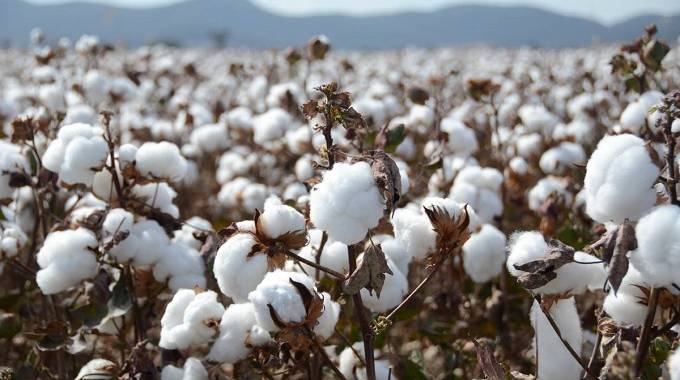
Sunday Mail Reporter
Government is set to introduce a cotton subsidy for the current marketing season to cushion thousands of farmers as international lint prices plunge, The Sunday Mail Business has learnt.
“It is something Treasury is seriously considering. The issue being considered is how to finance the gap — we will soon come up with a position,” said Mr Clive Mphambela, who is chief director (communications and advocacy) in the Ministry of Finance and Economic Development.
Earlier this month, global lint prices dropped to the lowest levels since the global financial crisis in 2008 due to the coronavirus, denting growth prospects of the local cotton industry, which has been on a recovery path since 2015.
Prices bottomed up to US44 cents during the 2008 global financial crisis.
While the price in the New York Futures has marginally recovered to US55c per pound from US49c in the past few weeks, it represents a decline from US70c in the same period last year.
The deadly pandemic, which has killed more than 300 000 people around the world and infected more than 4,4 million, is taking a toll on commodity prices.
Cotton industry players have already warned that the prevailing international lint prices would exert pressure on ginners’ margins if Government does not chip in with a subsidy.
The bulk of Zimbabwe’s lint is sold to offshore markets, making the commodity — produced from raw cotton — one of the country’s largest foreign currency earners.
Last year, Zimbabwe produced 74 000 tonnes of raw cotton, down from 144 000 tonnes a year earlier after output was badly affected by the 2018/2019 drought, which was regarded by the United Nations as the worst in four decades.
Farmers and local ginners have been locked in negotiations for a producer price that reflects on the cost of inputs and international lint prices.
Their position, which is largely unanimous on the need for Government intervention, has since been submitted to the Agricultural Marketing Authority (AMA).
The marketing season, which normally runs from May to September, will begin once AMA sets the new price.
The Zimbabwe Farmers’ Union (ZFU) recently said subsidising cotton prices was “an ideal situation if the Government can afford”.
“That is what happens in the other countries where subsidies are put in place as shock absorbers,” said ZFU.
Farmers in major cotton producing countries such as the USA, China and India enjoy some form of price protection either through guaranteed prices or lifeboat subsidies, which kick in when world cotton prices dip below agreed levels.
Cotton Company of Zimbabwe (Cottco) acting managing director Mr Pious Manamike said the depressed international lint prices will have a negative impact on the ginner’s cash flows and profitability.
“We believe our sector is a good candidate for a Government stimulus package in whatever form. We are also supportive of the idea of subsidy as this will ensure business continuity for the important sector,” he said.
Last year, seven ginners sponsored about 313 500 farmers, with Cottco, which administers the Presidential Free Inputs Scheme, covering over 70 percent of the growers.
The country earned US$25 million from cotton exports last year, significantly lower than the average annual revenues of US$85 million.
Covid-19 has rattled the global economy, including the developed world, whose economies are now forecast to contract this year. Global value chains, which account for nearly half of global trade, have also been disrupted. The fallout from the pandemic has also affected commodity prices, fiscal revenues, foreign exchange receipts, foreign financial flows, global travel, tourism revenues and jobs.
